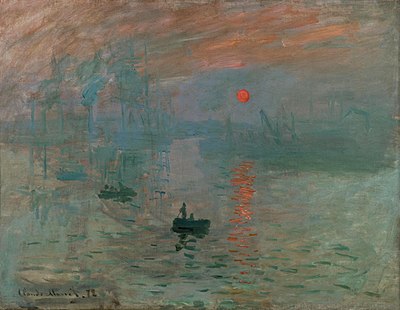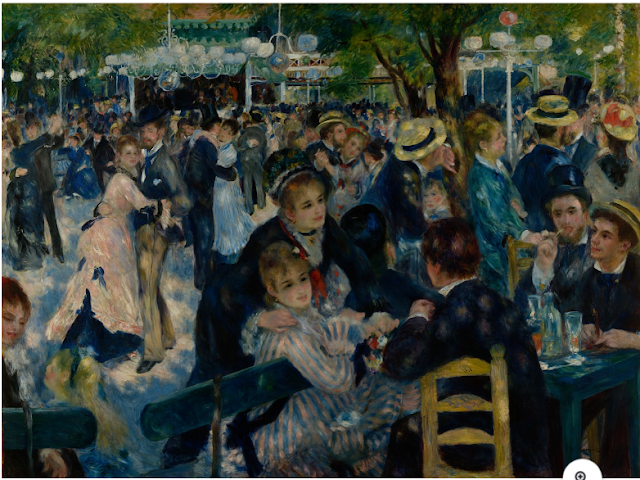Shared by Mª Monserrat González:
4th ESO.
History. Unit 5: The Second Industrial Revolution and the Imperialism
I have selected, as a conclusion of the unit, four Impressionist art works to analyze the period.
The objective is to revise the key concepts thay we have studied talking about the Second industrial Revolution: new society, new habits, new standards of life: leisure time, relax, how the new chemical industry made possible to paint in the plain air, the middle-class joy of life thanks to the improvements introduced in the society, better working conditions after the working-class movement and so on. In fact, as an excuse to revise concets studied in the previous units.
I'll give the students 4 art works to revise the information of your text book related to Impressionism and Post-Impressionism. After explaining these artistic movement in class and as a revison of the unit, the students have to work with these images.
1- Write a brief bioghaphy of each artist.
2- Describe the painting. (In previous units we will have revised the vocabulary needed with the English teacher)
3- Compare these images to other artistic movement we have studied in class: Romanticism, Realism, etc.. What are the main differences?
4- Finally, students will talk about the realationship of these images with History. How did these painting reflect this historical period? (new type of society, new activities, new habits, clothes, activities in the free time, landscapes, places, etc...)
5- Write a brief conclusion about Impressionism. Do you like these images? Why? Why not?
The students have to prepare this activity at home and the following day they will share their impressions and ideas in plenary. I have designed this activity for next Friday.
The paintings selected are:
Impression: Sunrise by Monet:
A Sunday Afternoon on the island of La Grande jatte by Seurat
Ball at the Moulin de la Galette by Renoir
A bar at the Folies-Bergere by Manet
____________
Other activities:
At the end of each unit there is always a section dedicated to the art in each period. I it love because images of art works are always important to understand the period. Portraits, for example, are great.
In fact I usually explain the Ancien Règime and its characteristics with the oficial portrait of Louis XIV of France by Hyacinthe Rigaud, 1701.
Thanks to the elements of the portrait we can discuss about the type of monarchy: the coroncation robes, the symbols: scepter, throne, crown, fleur-de-lis, the garmets and textiles: velvet, armine fur, high-heeled shoes..
in other occasions I try to show the evolution in the Spanish monarchy comparing "Las Meninas" and "The family of Philip V".









No hay comentarios:
Publicar un comentario